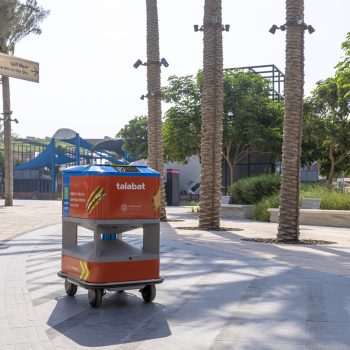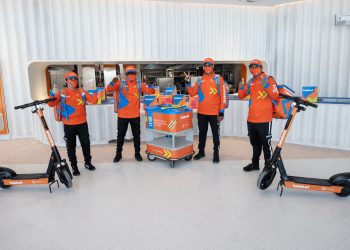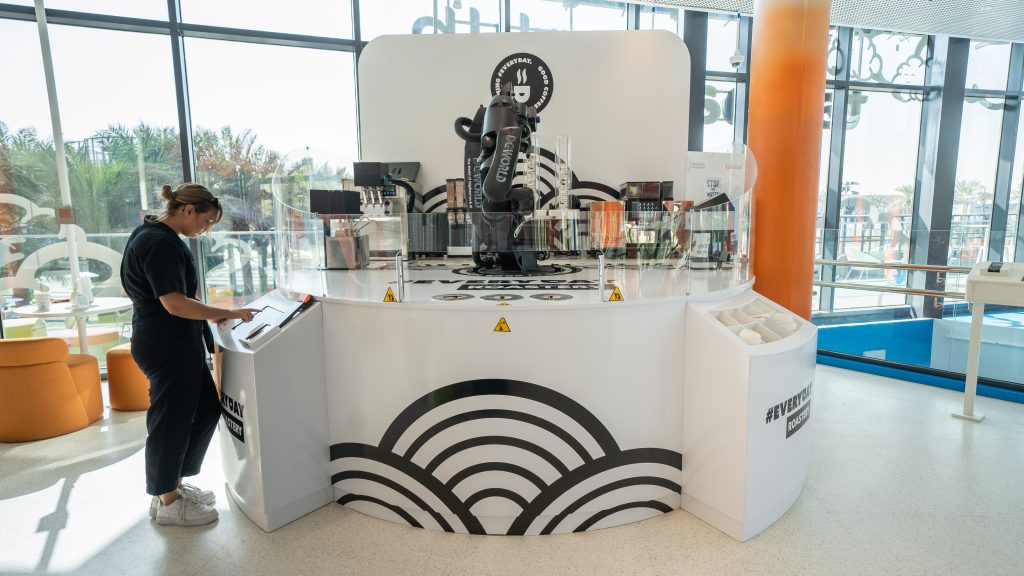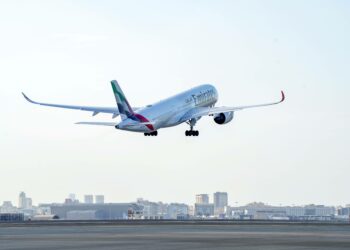Food delivery businesses have grown dramatically in the aftermath of the pandemic rolling lockdowns. Delivery app riders were some of the many heroes of the pandemic, delivering food to people’s doors in the wake of tight restrictions on moving around and dining out. But behind the scenes, there has been a significant amount of innovation over the past 18 months that has changed the future of food delivery as we know it. Underpinned and driven by data, personalisation, and convenience, technology companies like talabat have changed our food ordering experience forever – and many of these innovations are excitingly being born out of the GCC.
As a region that trades on convenience, the Middle East is a market ripe for experimentation. Internet penetration is high (indeed in the UAE 99% of the population are active internet users), the majority of people live in highly dense urban areas, and there is a tech-savvy customer database. This creates a perfect breeding ground to experiment with the latest technologies. Onur Elgun, VP of Strategy at talabat takes us to the future of the foodservice industry.
Robots and drones driving change
 EXPO 2020 Dubai is a platform where we – as the official food delivery partner – are proudly bringing innovation to life. With such an emphasis on realising the future today, we are using our kitchen at EXPO 2020 to showcase the future of food. Much of this is driven by looking at the challenge first to then define the solution. We ask ourselves, how can we deliver food faster? How can we bring down costs and cover more areas?
EXPO 2020 Dubai is a platform where we – as the official food delivery partner – are proudly bringing innovation to life. With such an emphasis on realising the future today, we are using our kitchen at EXPO 2020 to showcase the future of food. Much of this is driven by looking at the challenge first to then define the solution. We ask ourselves, how can we deliver food faster? How can we bring down costs and cover more areas?
Drone delivery is part of the solution, which is providing a breakthrough when it comes to food delivery. They are faster, costs are significantly lower and the areas that can be covered are vast. Far from being a gimmick, they will provide us with the opportunity to scale and serve more customers, and we can reach remote areas and regions to increase the coverage. But whilst drone delivery is revolutionary in many ways, it is one part of the value chain.
Another aspect that we are trialling at EXPO 2020 is the use of robots for delivery at scale. The talabat robots, or “tala-bots” as they’re affectionately known, that deliver food around the Expo site are certainly getting lots of attention from visitors, but for us our excitement extends way beyond their physical and innovative appearance: they will absolutely revolutionise the way we order food, and we’re incredibly proud to bring this to EXPO 2020.
Scaling new heights via new technology
In the GCC there are a lot of vertical households – you only have to look at Dubai Marina and Doha Corniche to be able to see this. More than 50% of the population lives above floor five, and many even higher. When you think of the journey to delivery, riders must first travel to the location, park their bikes, speak to security, wait for the lift, find the apartment and then do this in reverse on the way down.
 But today, robots can help with this. In the future, we will have robots already lined up at each tower, the rider can park up, scan the QR code on the robot to open its lid and drop off the food or grocery item, with the robot taking the reins from there. Continuing the journey, the robot will then move into the building, talk to the lift (so they interact via data transmission), enter the apartment and finish the process. Ultimately this will save considerable amounts of time meaning that more deliveries can be made, making the process both more efficient for the customer and the rider.
But today, robots can help with this. In the future, we will have robots already lined up at each tower, the rider can park up, scan the QR code on the robot to open its lid and drop off the food or grocery item, with the robot taking the reins from there. Continuing the journey, the robot will then move into the building, talk to the lift (so they interact via data transmission), enter the apartment and finish the process. Ultimately this will save considerable amounts of time meaning that more deliveries can be made, making the process both more efficient for the customer and the rider.
Imagine the efficiencies here for a second – and this is already happening via our sister company Delivery Hero in Korea. On the ground here at EXPO 2020, our ‘tala-bots’ have the EXPO 2020 site map integrated within them. So, when you scan a QR code and order a salad for example, the robot knows how to navigate to the eight pick-up and drop-off points. The same logic applies to the customer, the robot would alert the customer to advise them that their order is ready.
A hybrid future
This is the future model we are heading to. And this is not about ‘robots taking human jobs’, far from it; this is about building a hybrid model where both humans and machines exist side by side, complementing each other to bring efficiencies to the customer. The technology here becomes the enabler, it empowers and supports the riders to be more efficient, whilst removing some of the time-intensive work (such as navigating through buildings) to bring about a more fluid experience for the customer. As such, we are seeing the optimisation of technology everywhere along the value chain.
Head in the clouds
Aside from the delivery experience, we also see major innovations when it comes to our restaurant partners, as part of their future – recovery and growth – is rooted in cloud kitchens. The advantage of these cloud kitchens is that they don’t have to be located on a High Street; thanks to our data and analytics we can conveniently locate cloud kitchens at the right locations set up with the right “local” cuisine preferences, knowing what the population likes and the coverage is without the high fixed costs associated with being at prime locations. It enables us to better serve the community in a more cost effective and faster way.
Aggregators like talabat channel customers to food vendors and their kitchens, with riders being conveniently located near the kitchens, thus reducing the delivery time. So from a delivery perspective it also becomes more affordable, because the cost savings transfer into food cost, with the convenience of delivering cost savings directly to the customer.
Planning for an unplanned future
So, with drones, kitchens, and robotic deliveries being enablers, what else are we aiming for? Well fundamentally, in an industry which is changing so rapidly, our mission is to eliminate the need of planning for high frequent essentials. If you know your groceries will be delivered in 10 minutes, you would not need to plan for this and therefore convenience is the watchword of progress here.
For example, if talabat could connect to your smart fridge, depending on your patterns, we know what you will run out of and when, based on your habits. If you frequently buy eggs, talabat’s algorithms will know when you will run out of eggs, and with your consent, these can be ordered to arrive in time for your breakfast. This is the technology of the future. It is not just about a smart connected home, it is about a smart connected community. A fridge or even an oven can tell you a lot about your day-to-day life. So, the data helps predict your behaviour.
Customer expectations are always changing, but one thing that is a constant is that customers are looking for convenience, choice, and affordability. So, to win the hearts, minds (and stomachs!) of customers we must develop and evolve in innovative ways. This is achieved by regular group market research tests and tasks with customers. By conducting these tests, we can learn considerable amounts about customer sentiment, which then provides unique insight about how appealing something may be to a customer. These group tests enable us to test quickly, fail quickly, learn quickly, and adapt quickly.
The future of food and grocery shopping is that there shouldn’t be the need for planning from the customer. Data driven behaviour patterns mean that food, groceries, and much more can be ordered and received quicker and faster than ever before. Underpinning this are things like artificial intelligence, integrated appliances, and machine learning, with the likes of data collection – for example predicting the restaurants people will want to dine in and order from based on previous patterns – helping to move the food delivery industry towards the future. By using technology to show what’s in your fridge, what you are watching online and food menus you are looking at, we can come up with predictions to lower the bar on planning for food and groceries you want to order. The key will be high personalisation, which we are striving for.




































































